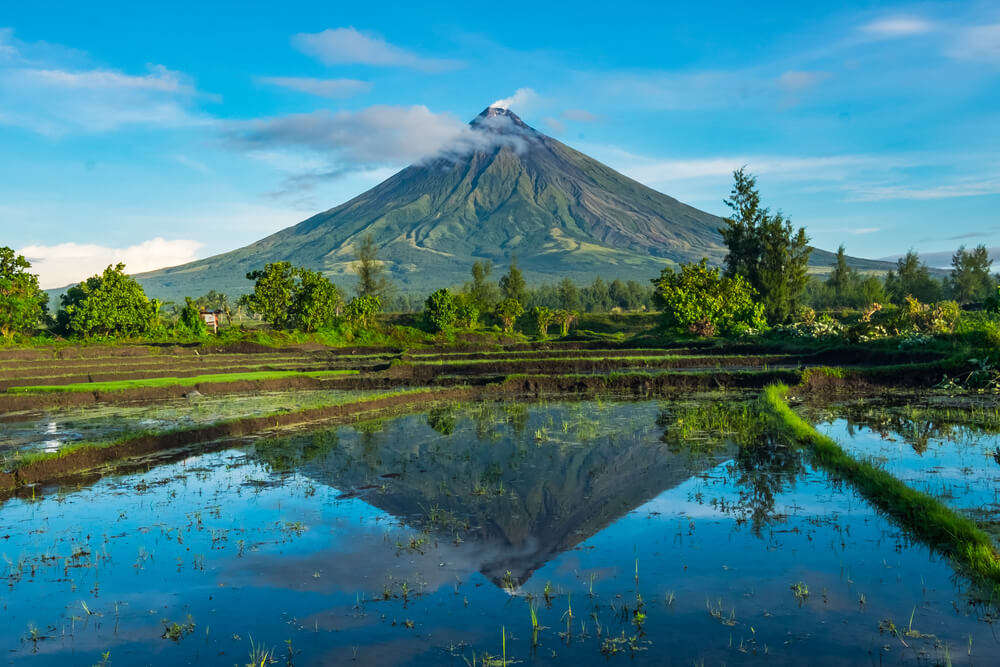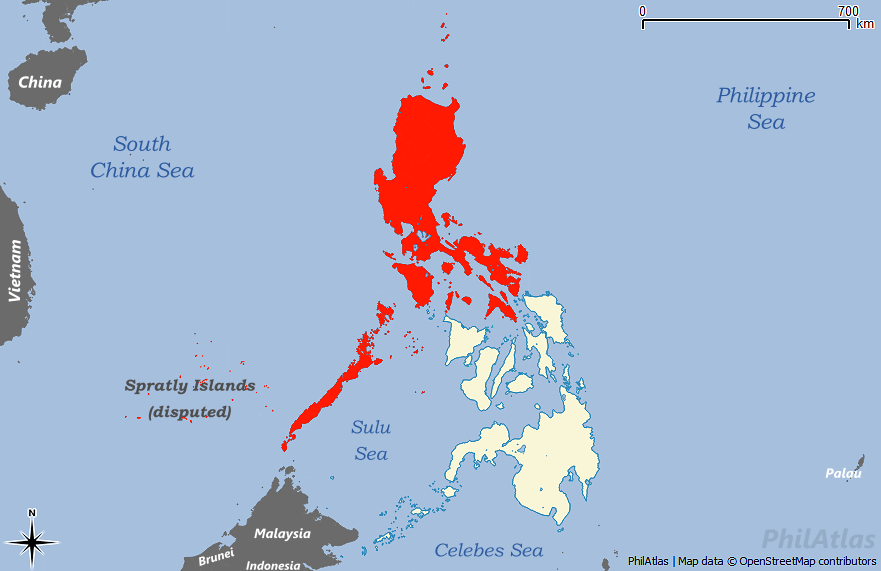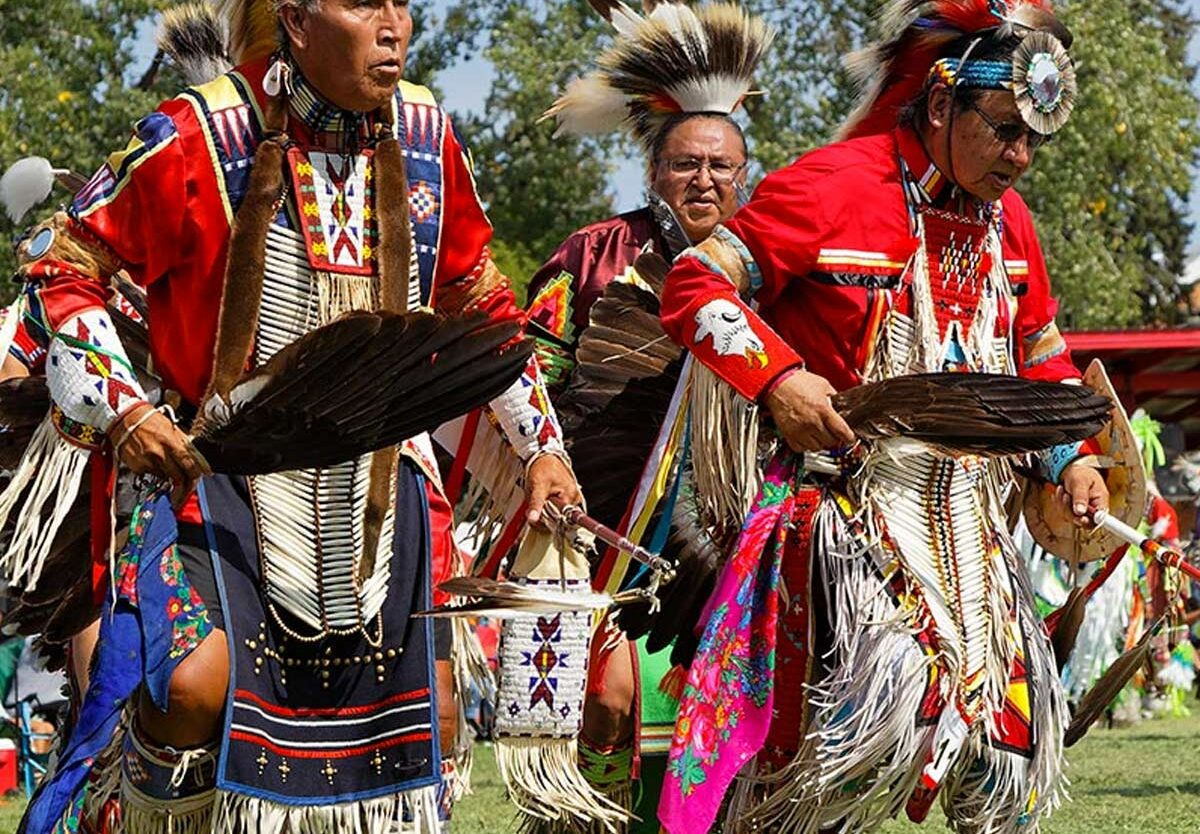Luzon is known as the largest island in the Philippines, and due to its economic activities and resources, it’s often considered the richest among the Philippine islands.

Historical Overview
The history of Luzon is deeply rooted in its early settlements, trading activities, and the effects of colonization. Its wealth and resources have played a pivotal role in shaping its socio-economic and political landscapes.
Early Settlements and Trade
Luzon has always been a hub of activity since ancient times. The first inhabitants were the Aeta, a Negrito ethnic group, who were believed to have crossed ancient land bridges from the mainland. As trade flourished, various ethnic groups, like the Tagalogs and Kapampangans, started to establish their own communities along coastal areas and riverbanks. Strategic trading posts were set up, fostering exchanges with Chinese, Malay, and Indian merchants, making Luzon a melting pot of cultures.
Colonial Influences and the Island’s Riches
When the Spanish arrived in the 16th century, they were quickly drawn to Luzon’s abundant natural resources. The discovery of gold mines, fertile lands, and strategic harbors made the island an epicenter for colonial administration and commerce. Manila, Luzon’s premier city, was established as the capital and soon became an essential part of the Spanish Galleon Trade. Over time, the Spanish influence deeply embedded itself in the fabric of Luzon’s culture, seen in religion, arts, and architecture.
Geographical Overview
Luzon, being the northernmost major island in the Philippines, stands as a testament to the country’s rich geographical diversity. Its vast landscapes encompass a range of features from mountain ranges to sprawling plains, setting the stage for its vibrant culture and history.
Location and Size
- Positioned at the northern region of the Philippine archipelago.
- With an area of approximately 104,688 square kilometers, it is the largest island in the Philippines.
- Bounded by the South China Sea to the west and the Philippine Sea to the east.

Topographical Features and Landmarks
- Dominated by the Cordillera Central mountain range to the north.
- Home to Mount Pulag, the third highest peak in the country.
- Features expansive plains such as the Central Luzon Plain, vital for agriculture.
- Taal Volcano, one of the most active volcanoes, lies to the south in Batangas.
Provinces and Key Cities
- Provinces like Pangasinan, La Union, and Ilocos Norte are situated in the northern parts.
- Manila, the country’s capital, is nestled along the western shores and serves as the primary gateway to the island.
- Other major cities include Quezon City, Baguio, and Angeles, each contributing distinctively to Luzon’s socio-economic fabric.
Natural Resources
Luzon’s vast expanse is rich in a myriad of natural resources that drive the economy and support livelihoods across the island. From fertile soils to bountiful seas, Luzon remains a cornerstone of the Philippines’ resource-driven prosperity.
Mineral Wealth
Luzon boasts an array of significant mineral deposits that have made it a key player in the mining industry. Gold, prevalent in the Cordillera region, has been a sought-after resource for centuries. Moreover, vast reserves of copper and nickel place the island at the forefront of the nation’s mining exports.
Agricultural Potential and Major Crops
The fertile plains of Luzon serve as the backbone of the country’s agricultural sector. Central Luzon, often referred to as the “Rice Granary of the Philippines”, dominates rice production, feeding millions nationwide. Beyond rice, the land yields a plethora of crops such as corn, sugarcane, and coconut. Furthermore, the Ilocos region stands out with its cultivation of specialty crops like tobacco and garlic.
Marine Resources and Fisheries
Luzon’s extensive coastline and marine territories harbor a wealth of marine life. The Lingayen Gulf and Manila Bay, renowned fishing grounds, provide a steady source of tuna, sardines, and mackerel, sustaining local fisheries and contributing to exports. Additionally, mangrove forests punctuate the coastlines, not only serving as natural buffers against coastal erosion but also as vital breeding grounds for various aquatic species.
Economic Perspective
Luzon’s economic landscape stands as a testament to its integral role in driving the Philippines’ progress and prosperity. As the primary hub of commerce, industry, and innovation, the island’s dynamism is evident in its contributions to the national economy, the prominence of its major industries, and the plethora of trade and investment opportunities it presents.

Island’s Contribution to the National Economy
- Luzon, particularly Metro Manila, contributes a significant portion of the Philippines’ Gross Domestic Product (GDP).
- The island hosts the majority of the country’s top universities and research institutions, fostering innovation and human capital development.
- Its strategic location has made it the center for most government institutions, thereby influencing major policy decisions and national economic planning.
- The presence of key infrastructures, such as ports, airports, and highways, facilitates domestic and international trade, reinforcing Luzon’s economic dominance in the country.
Major Industries and Enterprises
- The BPO industry, with hubs primarily located in cities like Manila and Quezon City, employs millions and generates substantial foreign revenue.
- Manufacturing zones and industrial parks spread across the island produce goods ranging from electronics to automotive parts.
- Tourism, with attractions like Mayon Volcano and the Banaue Rice Terraces, continues to be a revenue-generator, drawing both local and international visitors.
- The burgeoning tech startup ecosystem, supported by a skilled workforce and investor interest, indicates a promising future for tech-driven innovations.
Trade and Investment Opportunities
- Luzon, with its well-established infrastructures, offers a conducive environment for foreign direct investments.
- Opportunities in renewable energy sectors, especially in solar and wind, are gaining traction.
- The government’s “Build, Build, Build” program opens doors for investments in infrastructure projects, aiming to bolster national development.
- Export processing zones present chances for international enterprises to set up operations, taking advantage of the island’s strategic location in the Southeast Asian region.
Cultural Significance
Luzon, steeped in a rich tapestry of history and tradition, stands as a beacon of the Philippines’ diverse and vibrant culture. The island, with its indigenous communities, flamboyant festivals, and delectable cuisines, offers a myriad of cultural experiences that resonate with both locals and international visitors.
Indigenous Peoples and Their Traditions
- The Igorot communities of the Cordilleras are renowned for their distinctive cultural practices, including the mambabatok (traditional tattooing) and their reverence for ancestral spirits.
- The Aeta communities, some of the earliest inhabitants of Luzon, have maintained a semi-nomadic lifestyle, deeply connected with nature.
- Each indigenous group has its unique weaving techniques, producing colorful and symbolic textiles that tell tales of their history and beliefs.

Festivals and Celebrations
- The Panagbenga Festival or Flower Festival in Baguio celebrates the city’s blossoming flowers with grand floats and street dancing.
- Pahiyas Festival in Lucban, Quezon, showcases houses adorned with colorful and intricate decorations made of rice and other agricultural produce, paying homage to the bounties of harvest.
- Every January, the Feast of the Black Nazarene in Manila draws millions of devotees in a grand procession of faith and devotion.
Culinary Delights of the Island
- Luzon is home to the famed Adobo, a savory dish of meat stewed in vinegar, soy sauce, and garlic.
- The Bicol region offers spicy treats like Bicol Express, made with chili, coconut milk, and shrimp paste.
- Pampanga, known as the Culinary Capital, boasts dishes like Sisig – a sizzling plate of minced pork, onions, and chili.
- For those with a sweet tooth, the Halo-halo, a refreshing dessert of mixed fruits, sweet preserves, and crushed ice, provides a delightful finish to any meal.
Tourist Attractions
Luzon’s array of tourist attractions beautifully encapsulates the essence of the Philippines, offering a blend of sun-kissed beaches, historical wonders, and thrilling adventure activities.
Popular Beaches and Resorts
- Palawan’s El Nido and Coron: These paradises are dotted with limestone cliffs, hidden lagoons, and turquoise waters, making them a must-visit for beach aficionados.
- La Union: Often referred to as the Surfing Capital of the North, it attracts surfers worldwide with its consistent waves and vibrant beach culture.
- Batangas: Home to various beach resorts, it’s an ideal spot for diving, snorkeling, and enjoying the sun. Anilao, in particular, is a haven for underwater photography enthusiasts.
Historical Landmarks and Sites
- Intramuros in Manila: The walled city, a relic from the Spanish colonial era, offers a glimpse into the Philippines’ colonial past with its well-preserved buildings and fortifications.
- Rizal Park: Dedicated to the country’s national hero, Dr. Jose Rizal, it’s a serene spot with monuments, gardens, and historical markers.
- Banaue Rice Terraces: Often dubbed the “Eighth Wonder of the World,” these terraces etched into the mountains showcase the engineering prowess of the ancient Ifugao people.
Adventure and Nature Activities
- Mount Pulag: As the highest peak in Luzon, it offers trekkers an ethereal experience, especially during the “sea of clouds” phenomenon at sunrise.
- Pagsanjan Falls: This stunning waterfall in Laguna promises an exhilarating boat ride experience as adventurers navigate through gorges and rapids.
- Caving in Sagada: Explore the depths of Sumaguing and Lumiang caves, marveling at the captivating stalactite and stalagmite formations.
Environmental Concerns
Luzon’s rapid industrial growth, coupled with its rich biodiversity, presents a complex canvas of environmental challenges and responsibilities. Protecting biodiversity, countering climate impacts, and advocating holistic conservation are vital for Luzon’s ecological future.
Conservation and Preservation Efforts
- National Parks and Protected Areas: Luzon houses several protected regions such as the Mount Pulag National Park and the Tubbataha Reefs Natural Park, safeguarding endemic species and delicate ecosystems.
- Community-led Initiatives: Local communities, recognizing the value of their natural assets, often lead grassroots movements to conserve forests, coastal regions, and traditional farming landscapes.
- Governmental Interventions: Regulatory frameworks, such as logging bans and sustainable tourism guidelines, aim to strike a balance between development and conservation.
Threats to Biodiversity
- Deforestation: Extensive logging activities, both legal and illegal, severely diminish Luzon’s forest cover, endangering habitats and leading to soil erosion.
- Poaching: Certain endemic species, prized in illegal wildlife trade, face the risk of extinction due to unchecked poaching.
- Urbanization: The sprawling urban growth in cities like Manila often encroaches upon wetlands, mangroves, and other ecologically vital areas, disrupting local fauna and flora.
Climate Change Impacts
- Rising Sea Levels: Coastal areas of Luzon, especially those in low-lying regions, grapple with the challenge of rising sea levels, endangering communities and ecosystems.
- Increased Weather Extremities: Typhoons, becoming more intense and frequent, have wreaked havoc on infrastructure, agriculture, and livelihoods.
- Shifts in Agricultural Patterns: Changing rain patterns and unpredictable weather cycles have forced farmers to adapt, exploring new crop varieties and farming techniques.
